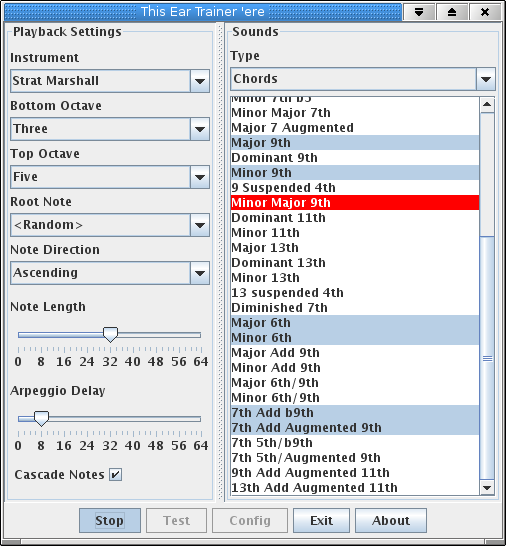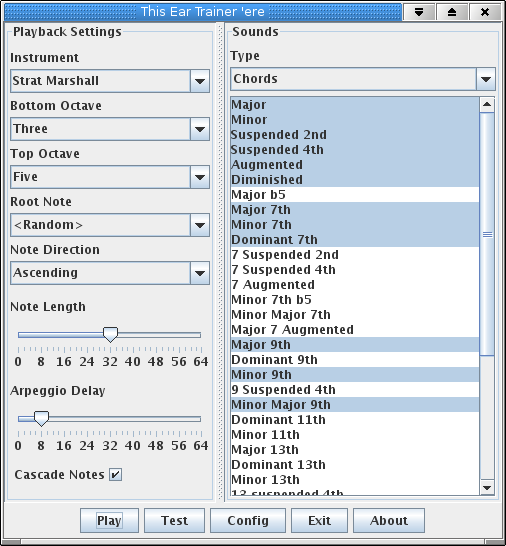Tutorial
Here are some hints on how to get started...

This is the main screen of Tete. You can see down the left hand side the playback configuration. This controls the instrument used to play the notes, the length of the sounded note and the delay to use to arpeggiate the note pattern. It also controls the octave range used to play the notes. The octaves are identified by their midi number which is less than intuitive, the octave containing middle C is highlighted.
On the left you can see the selection controls. Here you can select the type of pattern from intervals, chords, or scales. You can also select within the pattern type to filter the type pattern that is played or appears in the tests.

You can configure the synthesizer to be used to playback your sounds. The default Gervill synth supports SoundFont2, Downloadable Sounds, and a number of audio formats as sources of samples. You can find loads of these types on the net or record your own and get the a sound that closely matches your chosen instrument.
The velocity setting controls how hard the notes are played.

You can choose to only hear some of the patterns available by selecting from the list. You do this by clicking while holding the control and shift key in the normal Windows manner.
Tete will randomly play a sequence of patterns from those you have selected. As each pattern is played it is highlighted to show you which one is being played.
A good exercise in this mode is to set the arpeggio delay to a high value and then play your chosen patterns. Once the pattern to be played has been highlighted and the root note played sing the next note out loud and see if you can get the correct next note.

Once you're confident about recognising the list of patterns you've selected you can test yourself to see how well you're doing. Tete will select and play a random sequence of pattern types form those you have selected and ask you to identify them.

You can work with intervals.

You can choose from a large number of chord types. When I get around to adding more the list will get even longer.

There are also a number of different scales to learn.
